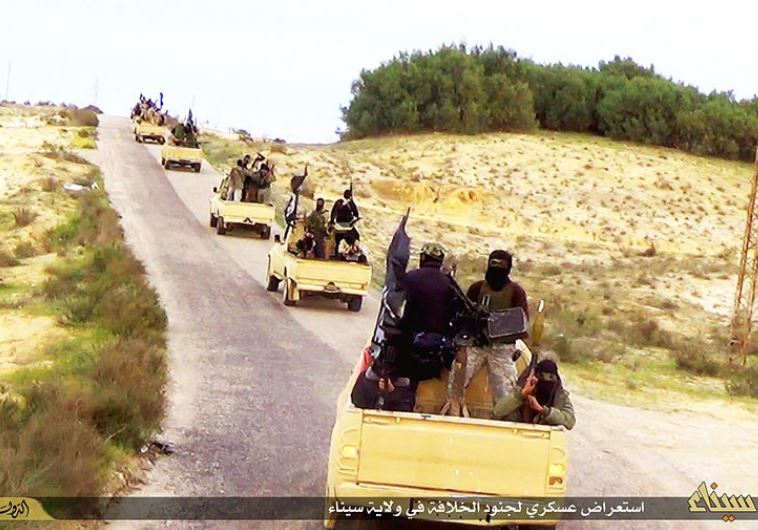Analysis: Palestinian terror may be bad, but ISIS in Sinai is a far more dangerous enemy
After daring to bring down a Russian passenger jet, the "Sinai branch" of ISIS has gained some self-confidence.
 Islamic State-affiliated Sinai Province fighters in the Sinai Peninsula(photo credit: WIKIMEDIA COMMONS/ARAB MEDIA)Updated:
Islamic State-affiliated Sinai Province fighters in the Sinai Peninsula(photo credit: WIKIMEDIA COMMONS/ARAB MEDIA)Updated: